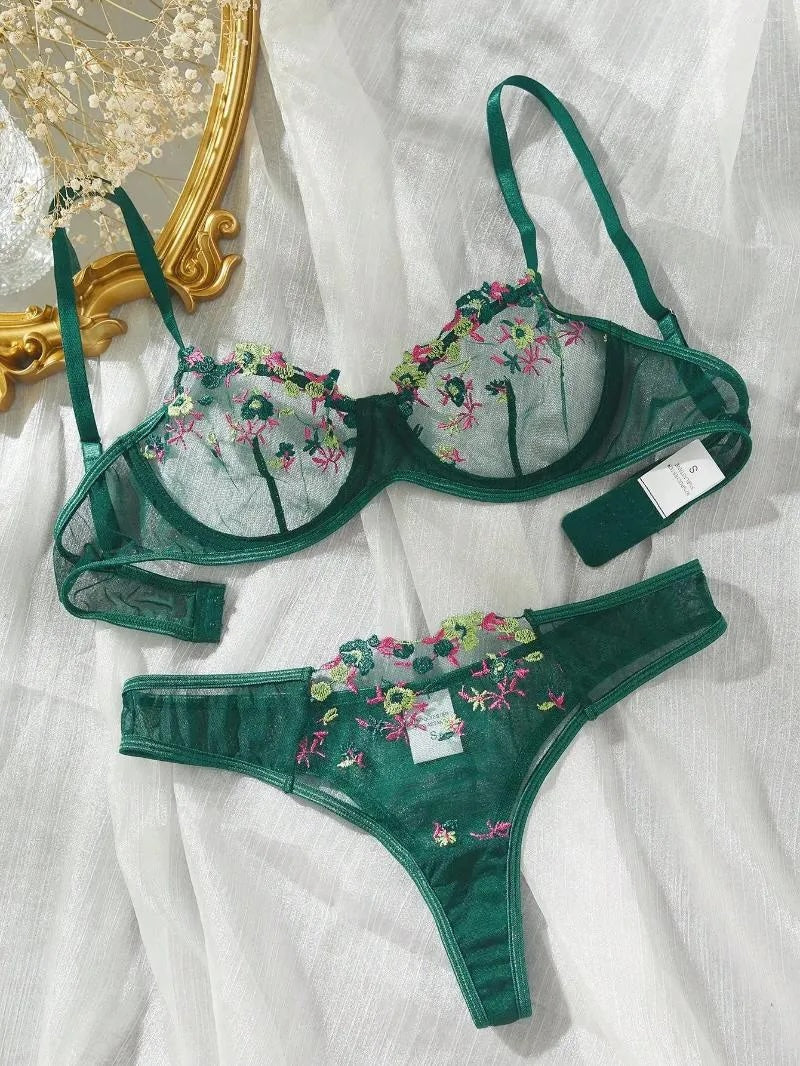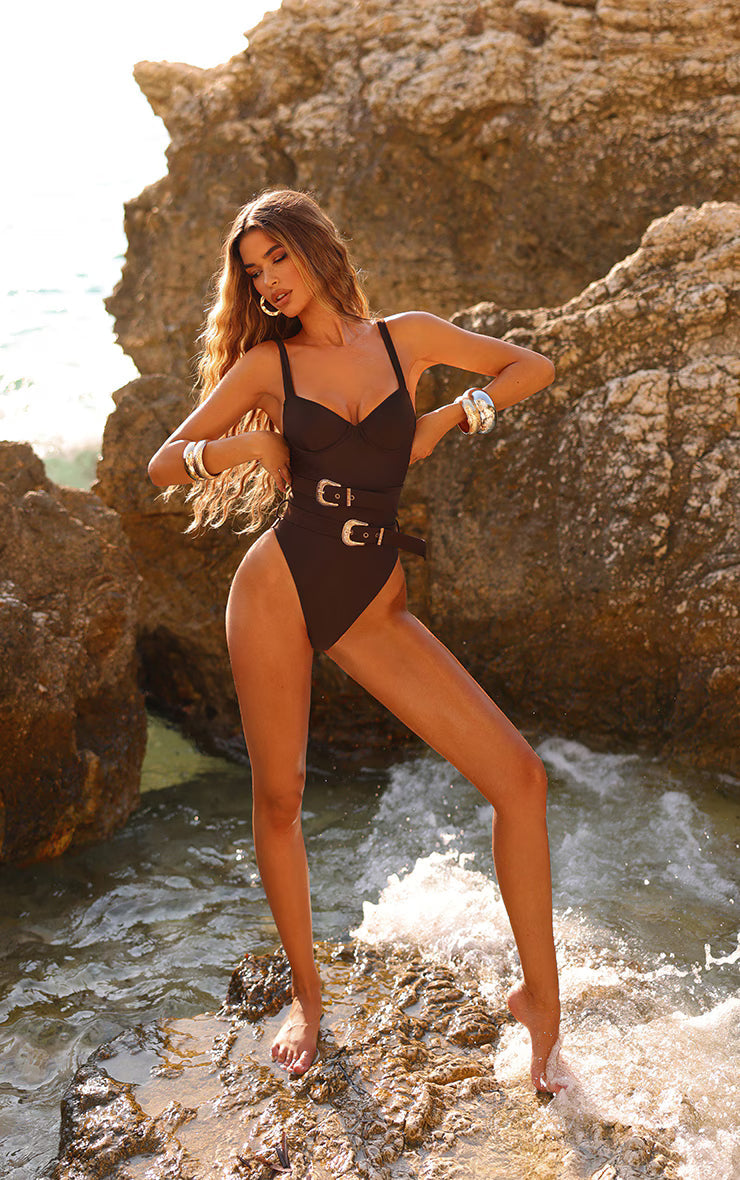36DD vs 38D: Understanding Bra Size Differences and Fit
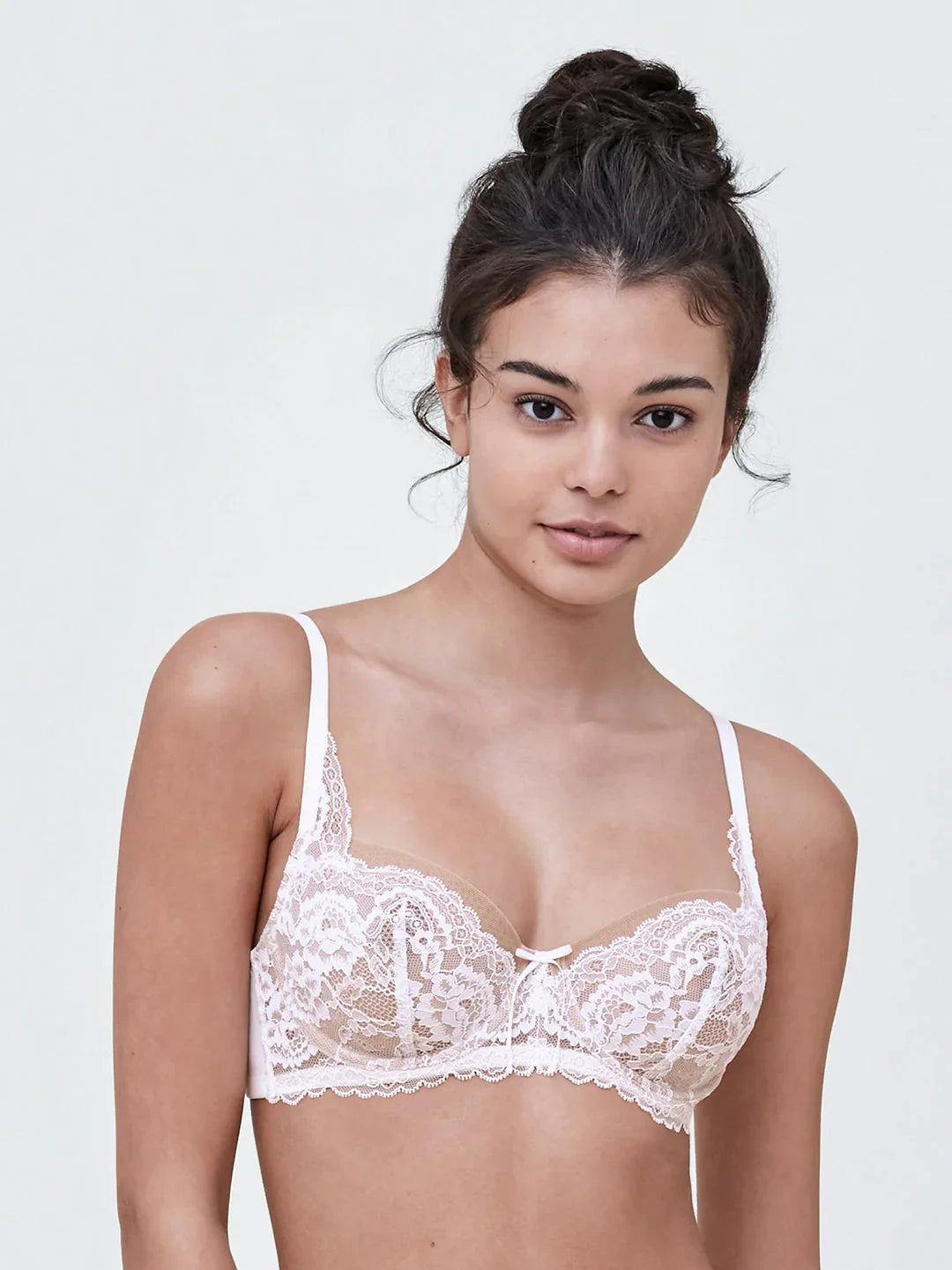
Trying to decide between a 36DD and 38D bra size? The key difference is that a 36DD has a tighter band and more cup volume than a 38D. In this article, you’ll learn how these differences affect fit and comfort, along with tips on choosing the best size for your body type when considering the 36DD vs 38D options. Bra sizes are determined by band and cup measurements; accurate fitting is crucial for comfort and support. A 36DD has a snugger band and holds more breast volume compared to a 38D, which has a looser band but a similar cup appearance. Sister sizing allows flexibility in finding a better fit, as sizes like 36DD and 38D share similar cup volumes but differ in band size.
Understanding Bra Sizes
Bra sizes are determined by two critical measurements: the band size around your ribcage and the cup size, which indicates breast volume. The band size is typically measured in inches and can be calculated using the ‘+4’ method (where you add four inches to your underbust measurement) or the ‘+0’ method (where you use your exact underbust measurement). The cup size, on the other hand, is determined by the difference between your bust and underbust measurements, with each inch of difference representing a different cup letter. Additionally, understanding your breast size and bra sizing can help you find the right fit.
These measurements are key to finding a well-fitting bra. Since sizing can vary across different brands, trying on bras and evaluating their fit for comfort and support is crucial. A proper bra not only fits well but also makes you feel confident and comfortable throughout the day. To ensure the best fit, it’s important to measure accurately.
What is 36DD?
A 36DD bra size is designed for a woman with a ribcage measurement of 36 inches and a bust measurement of approximately 41 inches. The ‘DD’ cup indicates a 5-inch difference between the band size and the bust measurement. This size is often suited for women with an average build but larger breast volume.
The term ‘double D’ or ‘DD’ signifies a cup size larger than a D cup but smaller than an E cup. The breast volume held by a 36DD is more significant compared to a 34DD, catering to women who need a bit more room in the dd size cup.
What is 38D?
The 38D bra size is defined by a 38-inch band measurement and a D cup, which signifies a 4-inch difference between the bust and band size. While some might perceive 38D as unusually large, it is actually a common size among women, providing a balanced fit for those with curvier bodies.
An accurate band measurement ensures proper support; it should be snug yet comfortable, not too loose. A well-fitted band ensures that the bra stays in place, providing the necessary support without causing discomfort.
Comparing 36DD and 38D
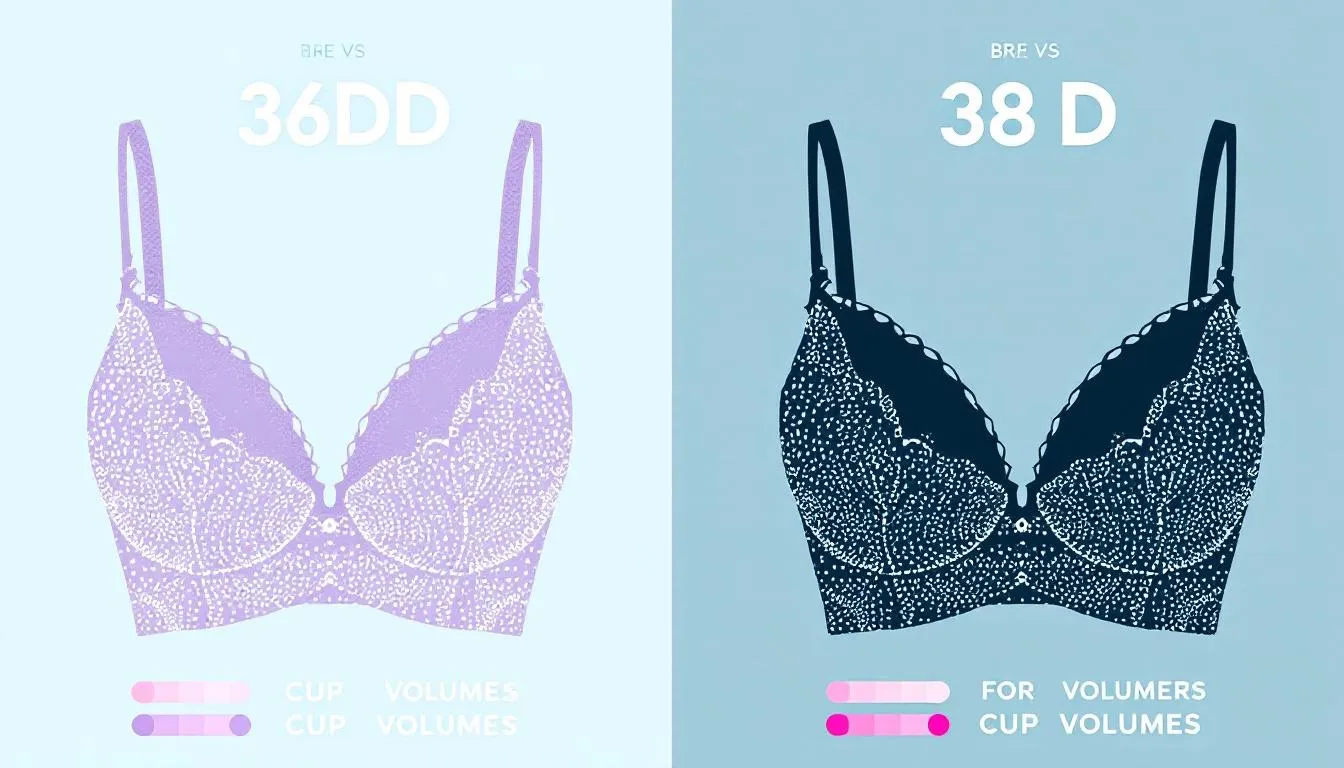
When comparing 36DD and 38D, the primary difference lies in the band size. A 38D is one band size larger than a 36DD, meaning it has a slightly wider band and hence provides a looser fit around the ribcage.
Cup volume is another key factor. Although both sizes may seem similar cup volume, the DD cup on a 36 band holds more breast volume than the D cup on a 38 band. This means that a 36DD offers more room in the cups compared to a 38D, which is essentially one cup size difference. However, they can be considered to have the same cup size in terms of appearance, with the D cup being slightly smaller.
Additionally, a 38DD bra often features thicker straps and wider back panels to provide better support, reflecting the increasing support requirements with a larger band size.
Knowing these differences helps you choose the correct size and achieve a good fit for optimal comfort and support.
Band Size Differences: 36 vs 38
A 36 band size offers a snugger fit compared to a 38 band. This snug fit provides more support and ensures that the bra stays in place throughout the day. On the other hand, a 38 band size might feel looser and less secure for some, potentially leading to discomfort or a lack of support.
The band size heavily influences how a bra fits and feels, especially when considering a smaller band. Recognizing these differences aids in selecting bras that provide better comfort and fit, particularly when considering the bra band, bands, and brand.
Cup Volume and Shape: DD vs D
The DD cup is one size larger than the D cup and is designed for women with a greater bust volume. This difference in cup size means that a DD cup will hold more breast tissue compared to a D cup. Additionally, many women find that dd cups provide the support and comfort they need.
Not all D and DD cup bras fit the same. The breast shape, along with the structure of the bra, also affects the cup’s fit and feel. Understanding these nuances can help you find a bra that fits well and provides the necessary support.
Sister Sizing: How 36DD and 38D Relate
Sister sizes refer to bra sizes with matching cup volumes. However, these sizes differ in band measurements. For example, 36DD and 38D are considered sister size charts because they have similar cup volumes but different band sizes.
Sister sizing helps you find a better fit when your standard size isn’t available. If the band on a 36DD feels too tight, you can try a 38D for a more comfortable fit. This flexibility allows for adjustments in band and cup sizes, ensuring a better overall fit.
Fit Considerations for Different Body Types
The fit of a bra can vary significantly depending on an individual’s body type. A 36C size is another well-balanced choice for moderate bust that sits between the 36DD and 38D, offering supportive comfort for many women. A 36DD size is commonly suitable for individuals with a medium build or a broader rib cage, while women with a 38D size often have curvier bodies that require more volume distribution across the chest.
A larger band size can affect cup fit, potentially causing gaping if the cup size isn’t adjusted to the rib cage size and breast tissue distribution. Understanding these considerations can help you choose the best size for your body type and ensure a comfortable fit.
Common Fit Issues with 36DD and 38D
One common fit issue with 36DD is spillage in the cups, indicating that the size might be too small for some women. On the other hand, women who find their breasts overflowing from D cups may need to consider a 36DD for better comfort, ensuring that the cup fits properly.
Adjusting to a larger band size, like moving from a 36DD to a 38D, might take some time as the body adapts to the change in fit. Fit variations between brands mean a D or DD cup may not have the same measurements across all manufacturers, especially when considering a new size.
Regular bra fitting helps avoid discomfort and support issues, particularly when changing sizes. These fittings can also help identify the right fit, preventing common issues such as skin irritation and back pain.
Choosing the Right Bra Style for 36DD and 38D
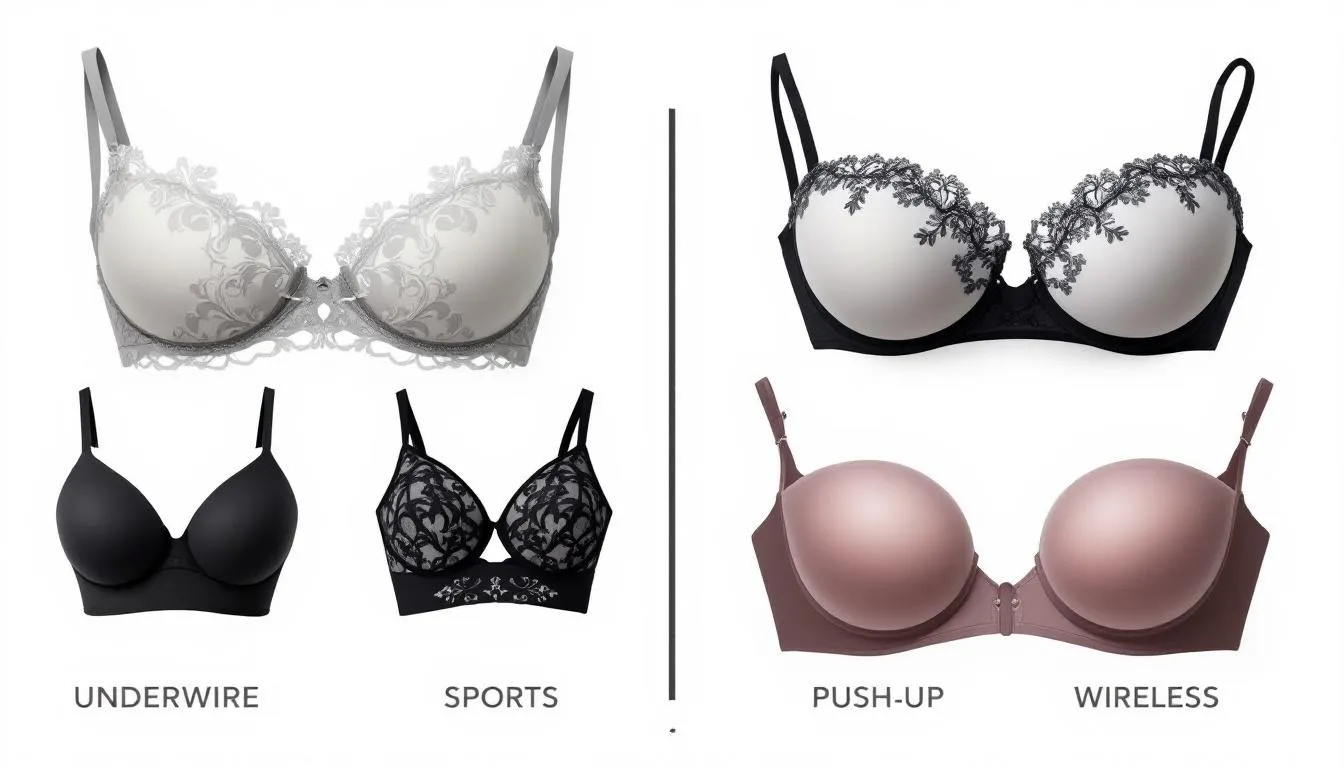
Choosing the right bra style can significantly enhance comfort and support for 36DD and 38D sizes. T-shirt bras are ideal for everyday wear, offering comfort and a smooth silhouette under clothing. Underwire wireless bras can offer comfort without compromising support for those with larger bust sizes. Completing your look with comfortable and practical hair accessories, such as black scrunchies, can further enhance your everyday style.
For those looking to enhance cleavage, different types of bras offer specific benefits:
-
Balconette bras provide uplifting support and are great for low-cut tops.
-
Full coverage bras ensure adequate support and minimize spillage for larger cup sizes.
-
Minimizer bras can help create a more streamlined appearance, suitable for those desiring reduced projection.
-
High-impact sports bras are recommended for workouts, as they provide maximum support and minimize movement. Additionally, many women find that the right bra cups can significantly improve comfort and fit.
Tips for Measuring and Fitting
The fit of a bra depends on the combination of band size and cup shape, which can vary greatly even within the same size designation. Using a simple size calculator can help you find your bra size accurately.
If your band size feels too small, consider going up one size. The same applies to your cup size; increase it by one if it’s too small as well. For example, if you’re wearing a 34D, try a 36D. There is no wrong way to put on a bra, but ensuring a snug fit without red marks is key to a comfortable fit.
The Importance of Regular Bra Fittings
A well-fitted bra can enhance posture and prevent long-term health problems related to inadequate support. Factors such as rib cage expansion, weight changes, and hormonal fluctuations can necessitate a shift to a larger bra size, which can also positively affect your shoulders.
Professional fittings can offer personalized insights into the best styles and sizes for individual body shapes. Many lingerie stores, including Victoria’s Secret, offer professional fitting services to ensure optimal bra size, and it’s recommended to recheck your measurements every six months to maintain comfort and support.
Summary
Understanding the differences between 36DD and 38D can make a significant difference in finding the perfect fit. By considering factors like band size, cup volume, and body type, you can find a bra that offers both comfort and support. Regular fittings and exploring different bra styles can further enhance your bra-wearing experience, ensuring you feel confident and comfortable every day.
Frequently Asked Questions
What is the main difference between 36DD and 38D?
The main difference between 36DD and 38D is the band size; 36DD has a smaller band size than 38D, while the cup volume is quite similar.
How can I know if I need a 36DD or a 38D?
To determine if you need a 36DD or a 38D, assess how the band fits; if a 36DD is tight around your ribcage while the cups fit well, a 38D would offer a looser band with a similar cup volume.
What are sister sizes?
Sister sizes refer to bra sizes that have equivalent cup volume but different band sizes. For instance, if you wear a 36DD, your sister size could be 38D.
Why is regular bra fitting important?
Regular bra fittings are essential to accommodate changes in your body, such as weight or hormonal shifts, ensuring you always wear a properly fitting bra for comfort and support.
What type of bra is best for 36DD and 38D?
For sizes 36DD and 38D, the best options include t-shirt bras, full coverage bras, and high-impact sports bras, as they provide the necessary support and comfort. Selecting the right style will ensure a flattering fit and enhance your silhouette.
